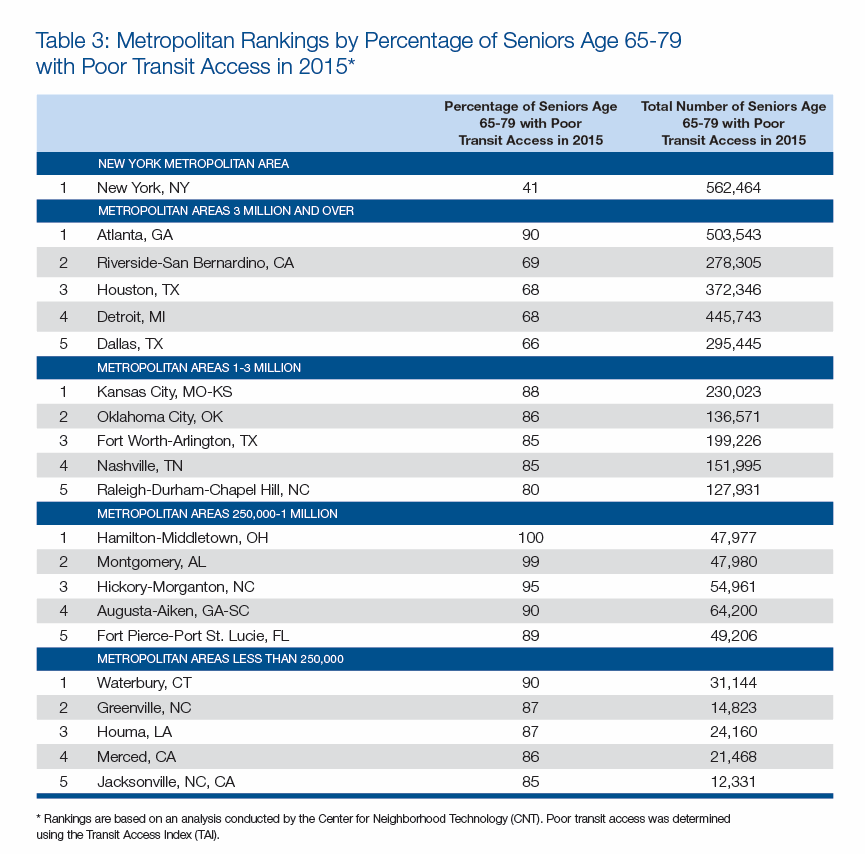TRANSPORTATION FOR AMERICA
I. Executive Summary
Defining Poor Transit Access
This report ranks metro areas by the percentage of seniors with poor access to public transportation in 2015. Poor transit access is defined for each metro size category to allow for a fair comparison and avoid holding small metro areas to the same standard for transit service and access as large metro areas. For a typical senior, poor access to transit is defined as the average number of bus, rail, or ferry routes within walking distance of their home. For each metro size category, poor access is defined as follows:
• For a metro area with fewer than 250,000 residents, a typical senior with poor transit service has access, on average, to less than .8 bus, rail, or ferry routes;
• For a metro area with between 250,000-1 million residents, a typical senior with poor transit service has access, on average, to fewer than 1.1 bus, rail, or ferry routes;
• For a metro area with between 1-3 million residents, a typical senior with poor transit service has access, on average, to fewer than 1.7 bus, rail, or ferry routes;
• For a metro area with 3 million or more residents, a typical senior with poor transit service has access, on average, to fewer than 1.9 bus, rail, or ferry routes;
• For the New York metropolitan area, a typical senior with poor transit service has access, on average, to fewer than 11.7 bus, rail, or ferry
II. Aging in Place, and Implications for Transportation
The baby boom generation is the largest in U.S. history. In 2011, the first wave will turn 65, with the last baby boomers not reaching 65 until 2030. Moreover, members of this generation are expected to live well into their 80s, signaling unprecedented demographic changes that will last for decades. The metropolitan rankings presented in this report are only the leading edge of a demographic phenomenon that will have substantial consequences for our nation’s surface transportation system.
According to data from the U.S. Administration on Aging, the percentage of the U.S. population age 65 and older increased by more than 12.5 percent from 1999 to 2009. U.S. Census Bureau data indicate that the number of Americans age 65 and older will increase to more than 71 million by 2030 – when the senior population will reach its peak. This will elevate seniors from 12 to 20 percent of the nations total population.
About Transportation For America
www.t4america.org
Transportation for America has formed a broad coalition of housing, business, environmental, public health, transportation, equitable development, and other organizations. We’re all seeking to align our national, state, and local transportation policies with an array of issues like economic opportunity, climate change, energy security, health, housing and community development.
Tags: Baby Boom Generation, T4America, Transportation for America







 RSS Feed
RSS Feed